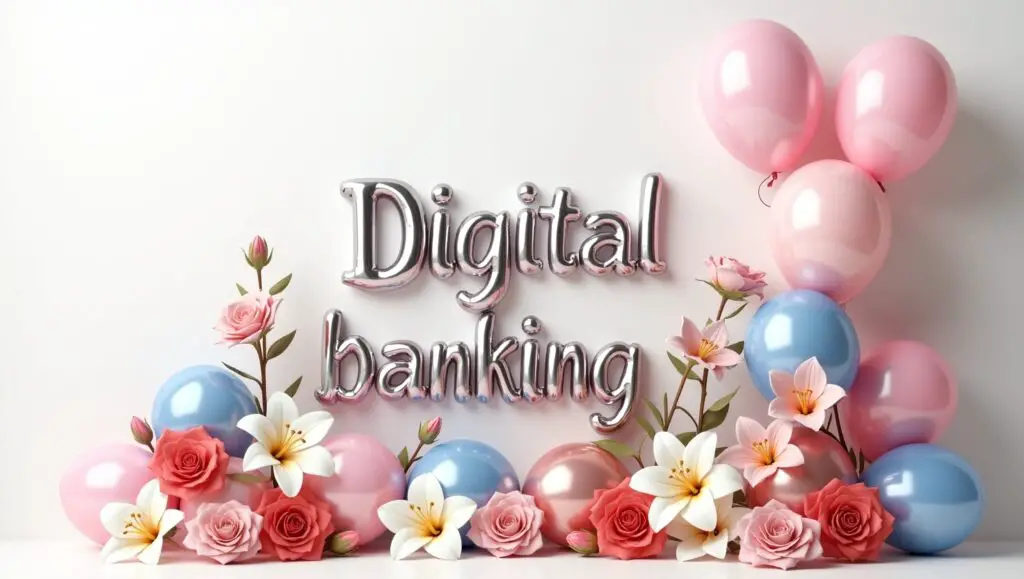In recent years, digital banking has evolved from a comfortable alternative to a dominant force in the financial world. As more people embrace technology and demand faster, safer, and more efficient financial services, traditional banks and fintech firms are racing to innovate. Digital banking is no longer the future—it is the present. This article covers the evolution of digital banking, its benefits, obstacles, and what it implies for consumers and businesses alike.
What Is Digital Banking?
Digital banking refers to the digitization of all traditional banking activities that were originally available solely at physical locations. From opening a bank account and transferring money to applying for loans and managing investments, everything can now be done online or through a mobile app. This shift has transformed how we engage with money.

The Rise of Digital Banking: Key Statistics
The worldwide digital banking business has seen exponential expansion in the recent decade. According to Statista, over 2.5 billion people utilized online banking services in 2024, and this number is anticipated to reach 3.6 billion by 2026. In regions like Asia, Africa, and Latin America, mobile banking adoption is soaring due to widespread smartphone use and the need for accessible financial services.
Additionally, the COVID-19 pandemic acted as a major catalyst. With lockdowns and limited access to physical branches, millions switched to digital platforms for the first time, quickening the transition toward online banking.
Benefits of Digital Banking
Digital banking offers various advantages for both customers and financial institutions:
- Convenience and Accessibility
Users can access their bank accounts 24/7 from anywhere in the world. Whether it’s checking accounts, conducting transactions, or paying bills, everything is just a few taps away. - Faster Transactions
Traditional banking operations may include extensive lineups and paperwork. Digital platforms shorten transaction time from hours to seconds, enhancing efficiency and consumer satisfaction. - Cost-Effective Digital banking decreases operational costs for banks by decreasing the need for physical branches and manual operations. These savings can lead to cheaper interest rates and reduced service charges for customers.
- Enhanced Security
Modern digital banks use robust encryption, biometric verification, and multi-factor authentication to protect consumer data and transactions.

Financial Inclusion
Digital banking plays a significant role in fostering financial inclusion, especially in rural or underbanked regions where physical bank offices are rare. Mobile banking apps and digital wallets allow people to save, borrow, and invest money without ever visiting a branch. Popular Digital Banking Services
Digital banking isn’t only about internet transfers. It presently comprises a wide range of services: Mobile banking apps Online account opening AI-driven financial advice Digital wallets (e.g., Apple Pay, Google Pay) Peer-to-peer payment platforms (e.g., Venmo, Zelle) Automated savings and investing tools Buy Now, Pay Later (BNPL) services Banks are increasingly connecting with third-party fintech providers to enhance user experience and give more personalized solutions. Challenges in Digital Banking Growth
While digital banking continues to flourish, it also confronts certain key challenges:- Cybersecurity Threats
As digital services develop, so do opportunities for cybercriminals. Banks must invest extensively in modern cybersecurity techniques to secure sensitive client data. - Digital Literacy
Not everyone is comfortable with using internet platforms. Elderly users or persons with restricted access to technology may find it challenging to accept digital banking. - Connectivity Issues
In many isolated regions, internet access is still unreliable. Without steady connectivity, digital banking becomes inaccessible to huge portions of the population.
Regulatory Compliance
Digital banking platforms must comply with sophisticated financial regulations, which differ from country to country. Staying compliant while innovating can be a tricky balancing act. The Role of Fintech Companies
Fintech (financial technology) companies have played a major role in developing digital banking. Startups like Revolut, Chime, and N26 have disrupted traditional banking patterns by delivering user-friendly apps, lower costs, and quicker services. These companies appeal primarily to younger generations searching for more flexibility and control over their finances. Traditional banks are now teaming with or acquiring fintech firms to stay competitive. This collaboration is fostering further innovation in the digital banking sector.
Future of Digital Banking
The future of digital banking looks optimistic. Here are some trends to watch: AI and Machine Learning: These technologies will provide more personalized banking experiences, fraud detection, and predictive financial planning. Blockchain Integration: Secure, decentralized systems will make transactions faster and more transparent. Open Banking: Customers will gain greater control over their financial data by integrating numerous accounts and services into a single platform. Voice and Chatbot Banking: Voice assistants and chatbots will handle everything from balance queries to loan applications.

Conclusion
The rapid expansion of digital banking is altering the financial industry as we know it. With its unsurpassed convenience, speed, and cost efficiency, digital banking is empowering millions to take control of their finances in smarter, safer ways. As technology continues to grow, so will the possibilities—bringing us closer to a world where financial services are accessible to anyone, anytime and anywhere. Whether you’re a tech-savvy user or just beginning to explore online banking, there has never been a better time to embrace the digital revolution in finance. Digital banking growth, online banking, mobile banking apps, fintech, financial technology, digital wallets, cybersecurity, financial inclusion, future of banking, digital financial services



